
The AIgorythm project

Playwright and actor

Novelist

Writer and poet

Volleyball player

Italian-Peruvian naturalist and geographer

Singer and percussionist

Last Inca emperor

Politician, former prime Minister

Journalist and TV host
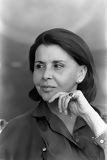
Poet

Inca warrior
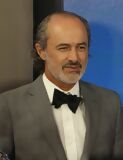
Actor and comedian

Biophysicist

Poet

Doctor and researcher
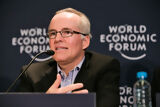
Businessman, Interbank group

Journalist and writer

Poet and writer

Singer and songwriter

Writer

Film director, Berlin Golden Bear winner

Football player

Writer and journalist
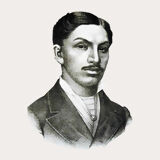
Doctor and scientist

Photograph

Chess player

Industrialist
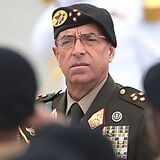
Former general

Specialist in public health

Actress and singer

Afro-Peruvian music singer

Mathematician and engineer

Indigenous chronicler

Neurologist and anthropologist

Painter

Football player

National hero, military leader

Intellectual and reformer

Chef and entrepreneur

Fashion designer

Singer-songwriter

TV presenter

Marathon runner

Indigenous Peruvian chronicler

Theologian

Former national team captain

Economist and former health minister

Inca princess

Writer and television host

Folk musician

Poet and guerrilla

Former UN secretary-general

Chef, known for fusion cuisine

Football player

Peruvian aviation pioneer

Poet and artist
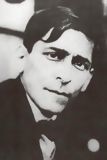
Marxist philosopher and writer

Industrialist and businessman
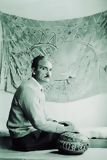
Novelist and ethnologist

Painter and muralist

Opera tenor

Fashion designer

Cardinal of Lima

Peruvian tennis player

Football coach

Leader of the indigenous rebellion

Military hero

Latin singer
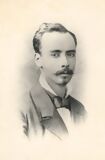
War of the Pacific hero

The youngest mother in history

Politician
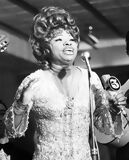
Creole music singer

Tennis player

Musician

Writer and politician

Politician and founder of the Christian Democratic Party

Founder of Sodalitium Christianae Vitae

Archaeologist and anthropologist

Military leader and politician

Television host
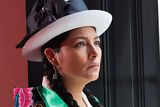
Actress and singer

Contemporary sculptor

Women’s rights activist

Beauty queen

Astrophysicist

Heroine of independence

Mathematician and archaeologist

Historian and anthropologist

Military figure and historical figure

Fashion photographer
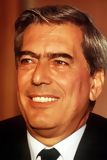
Writer, Nobel Prize in Literature, Politician

Revolutionary leader

Environmental activist

Leader of the indigenous rebellion

Musician from Gaia band

War hero

Military leader and politician

Chef, known for Nikkei cuisine

Volleyball coach and former player

Environmental activist

Television personality

Writer

Football player

Epidemiologist and former health Minister

Inventor and aerospace pioneer

Soldier and inventor

Rock singer

Chef and co-owner of Central restaurant

Painter

Football player

TV presenter and actress

Actor
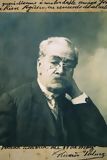
Writer and historian

Journalist and lawyer

Archaeologist, founder of Caral site
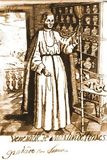
Monk and Saint
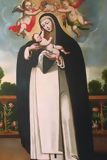
Saint, patron of Latin America

Physicist and engineer

World champion surfer

Actress

Oncologist

Singer, Latin Grammy winner

Former mayor of Lima

Singer

Actress

Former football player

Painter

Former football player

Painter

Inca leader

Archbishop, saint
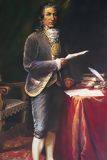
Leader of the indigenous rebellion

Revolutionary indigenous leader

Diplomat and intellectual

Sculptor and painter
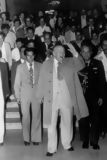
Political leader, founder of APRA

Lawyer and Former prime minister

Chef of Central restaurant
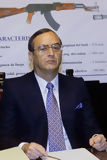
Former head of secret services

Popular singer

Fashion designer

Exotic music singer
Miguel Iglesias Pino de Arce was born on June 11, 1830, in Cajamarca, Peru, into a family of landowners. He was a Peruvian politician and military leader who played a crucial role during one of the darkest periods in Peru’s history: the War of the Pacific. Iglesias is best remembered for assuming the presidency at a critical moment when the country was devastated by the conflict with Chile. His role in the signing of the Treaty of Ancón and his stance during the Chilean occupation remain topics of controversy that marked his political life and legacy.
Miguel Iglesias grew up in a wealthy family in Cajamarca, which allowed him to receive a good education and develop in an environment where politics and agriculture were essential aspects of life. At a young age, Iglesias became interested in a military career, following the path of many young men of his time who saw the army as an opportunity to serve the nation and distinguish themselves in public life.
During his youth, Iglesias participated in several military campaigns in Peru, establishing himself as a competent and courageous officer. Throughout his military career, he held several important positions within the army, which allowed him to gain experience and earn the trust of his superiors. This military prestige was a key factor in his rise to political prominence during the turbulent times of the War of the Pacific.
The War of the Pacific, which pitted Peru and Bolivia against Chile from 1879 to 1884, was one of the most devastating conflicts in South American history. Chile, with a better-prepared and armed army, managed to invade southern Peru, occupying important cities such as Lima. During this period of uncertainty and chaos, Miguel Iglesias emerged as a key figure in Peruvian leadership.
In 1882, Iglesias, then a prominent military and political leader in northern Peru, was proclaimed Supreme Chief of the Republic by an assembly of notables in Cajamarca. This appointment occurred when the country was divided, with the legitimate government of President Francisco García Calderón operating under extremely difficult conditions during the Chilean occupation. Seeing the country’s dire situation and convinced that continuing the war would only bring more destruction and suffering, Iglesias opted to negotiate peace with Chile, a decision that earned him both support and opposition.
In 1883, Miguel Iglesias was elected provisional president of Peru during the Chilean occupation. His government, based in the north of the country, was recognized by Chile and other foreign nations, although many Peruvians still regarded García Calderón as the legitimate president. Iglesias’s primary task was to negotiate peace with Chile, which resulted in the signing of the Treaty of Ancón in October 1883. This treaty officially ended the war, but at a high cost: Peru had to cede the province of Tarapacá to Chile and accept the temporary occupation of Tacna and Arica, territories that would remain under Chilean control until a plebiscite was held (which never took place).
The Treaty of Ancón was highly controversial. Many Peruvians saw Iglesias as a traitor for accepting the harsh terms imposed by Chile, while others regarded him as a pragmatic patriot who did what was necessary to save Peru from further destruction. Regardless, the treaty marked the end of the military phase of the War of the Pacific and allowed the country to begin the arduous process of reconstruction.
Although Iglesias managed to end the war, his government was extremely unpopular among many sectors of Peruvian society. General Andrés Avelino Cáceres, another war hero, led an insurrection against Iglesias's government, resulting in a civil war in 1884. Cáceres and his followers, known as the "Caceristas," believed that Iglesias had sold out the country by accepting the terms of the Treaty of Ancón and fought to restore a government that better represented the interests of the Peruvian people.
The civil war ended with Iglesias's defeat in 1885, and he was forced to resign and retire from public life. Andrés Avelino Cáceres took over the presidency, and Miguel Iglesias withdrew to his estate in Cajamarca. Although he had attempted to rebuild the country after the devastation of the war, his legacy was tarnished by the controversies surrounding his presidency and his decision to sign peace with Chile.
After his resignation, Miguel Iglesias stayed away from Peruvian politics. He spent his final years on his estate in northern Peru, focusing on agriculture and his family. While he remained a controversial figure, many of his contemporaries acknowledged that Iglesias had acted during a time of extreme difficulty and had done what he believed was necessary to save Peru from further destruction.
Iglesias died on November 7, 1909, in Lima, at the age of 79. Despite the controversies that marked his political career, his role in Peruvian history is undeniable. He was a man who, in a moment of great crisis, took on the responsibility of leading the country and making difficult decisions in the name of peace.
Miguel Iglesias's legacy remains a subject of debate among Peruvian historians. To some, he was a pragmatic leader who did what was necessary to end a devastating war and save what remained of Peru. To others, he was a man who gave away too much and accepted a treaty that weakened the country and left it vulnerable to its enemies. What is clear is that Iglesias led the country during one of its most difficult moments and made decisions that, while unpopular, were critical for the nation’s future.
Miguel Iglesias was a man shaped by war, politics, and difficult decisions. His life and presidency were closely tied to one of the darkest chapters in Peru's history, and his role in the signing of the Treaty of Ancón remains a subject of controversy. Despite the challenges he faced, Iglesias left an indelible mark on Peruvian history, and his legacy continues to be debated by those seeking to understand the complexities of his time.